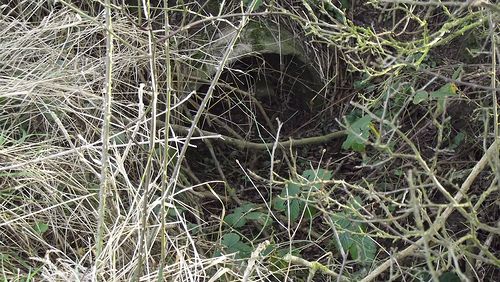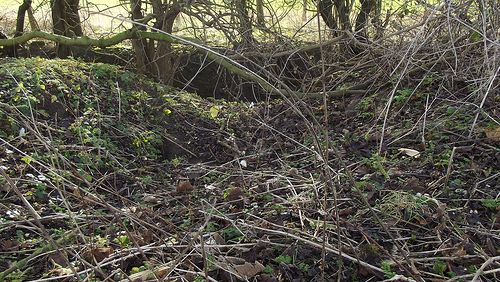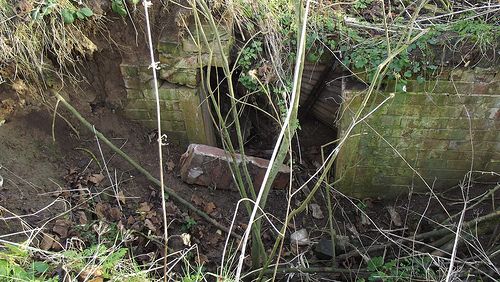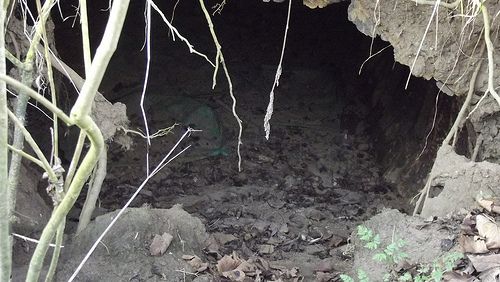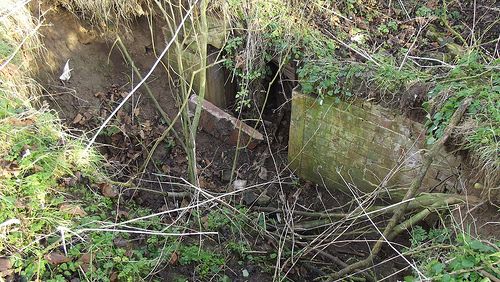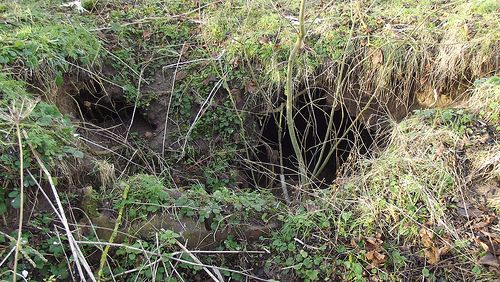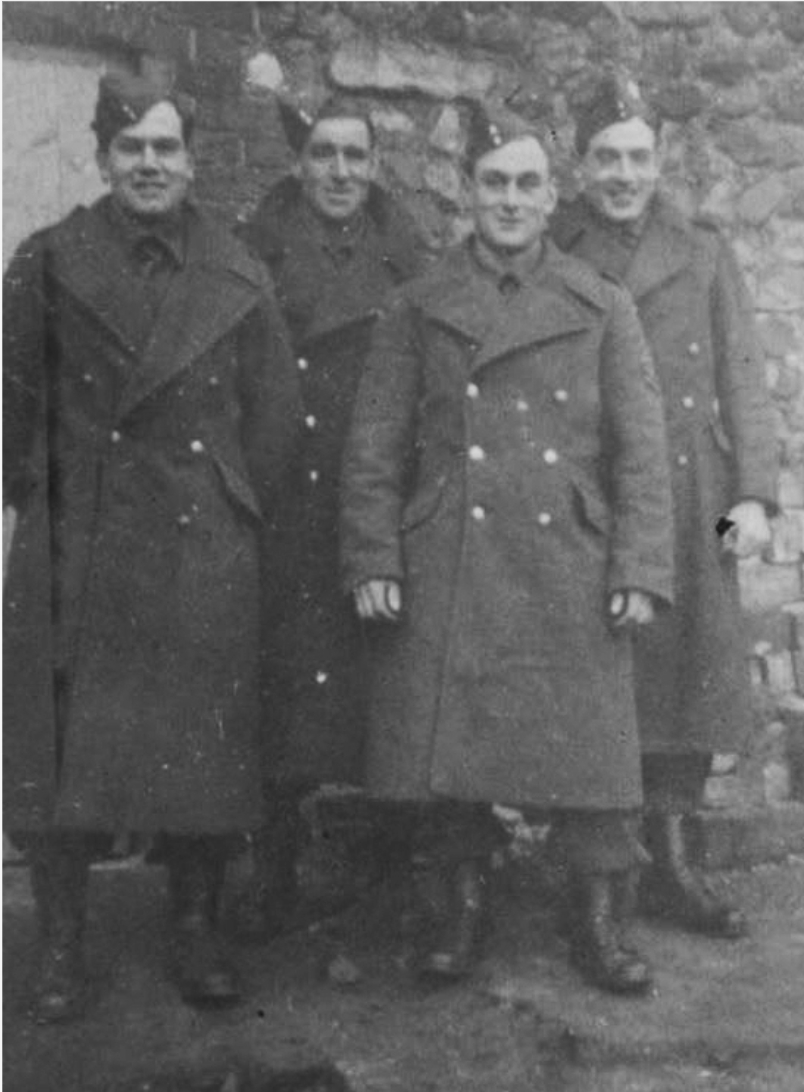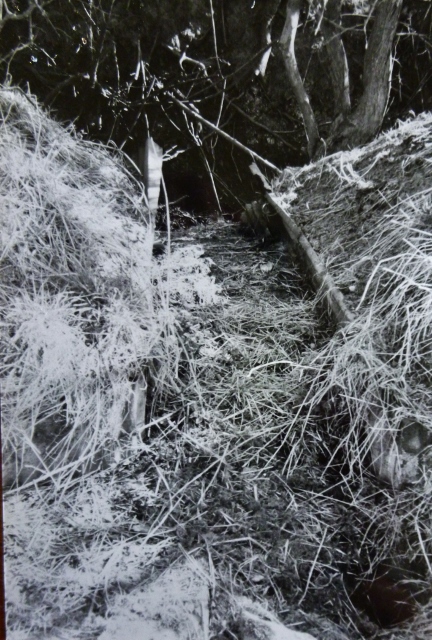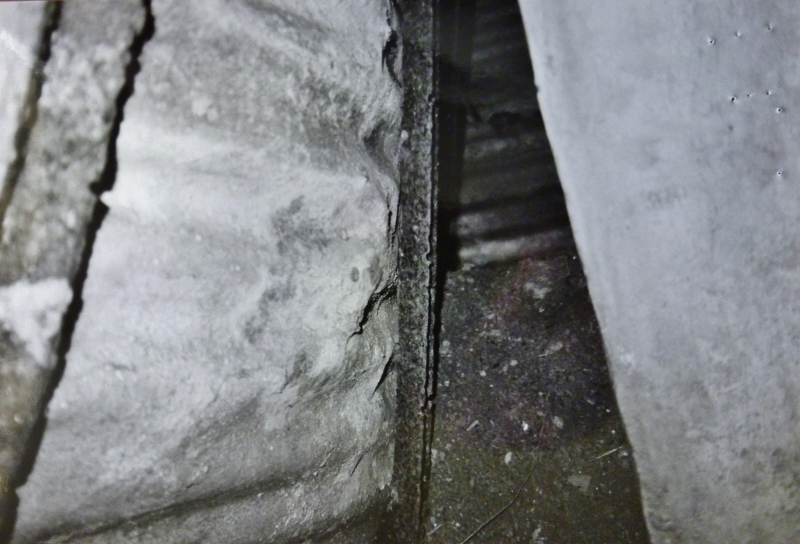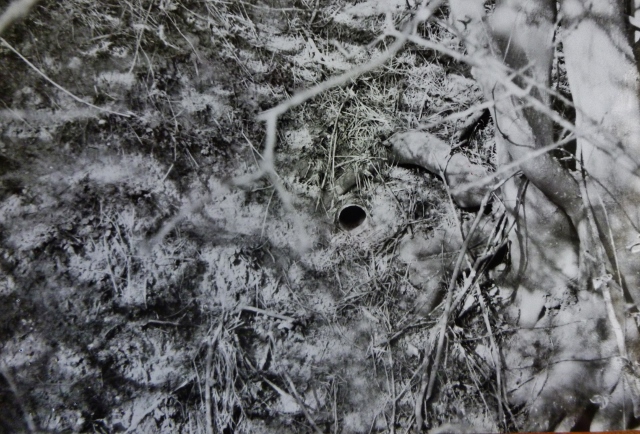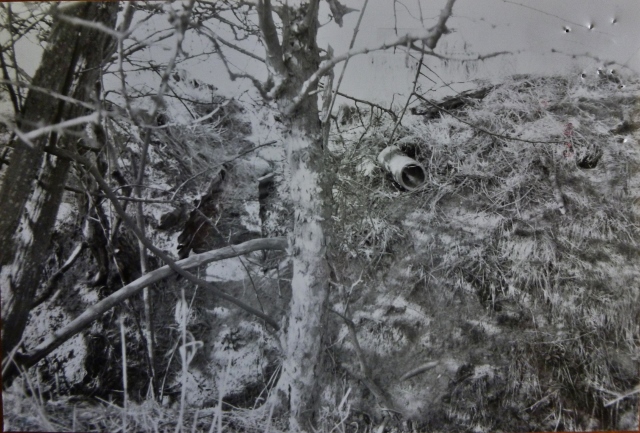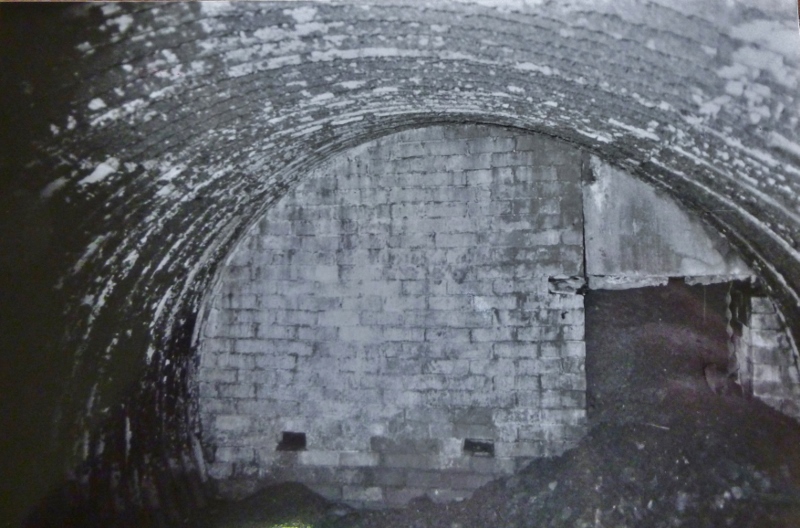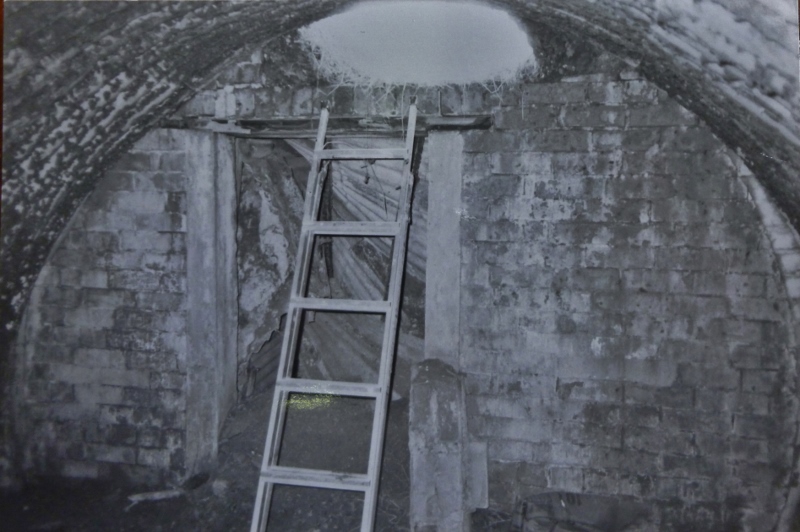The village of Bewholme is 3 miles north-west of the town of Hornsea.
| Name | Occupation | Posted from | Until |
|---|---|---|---|
| Sergeant Frank Dennis Blanchard | Tractor driver |
Unknown | Unknown |
| Sergeant Walter Eric Varley | Tractor driver |
Unknown | 03 Dec 1944 |
| Corporal Edward Rafton | Farm foreman |
Unknown | 03 Dec 1944 |
| Private Reginald Clifford Hara | Farmer |
Unknown | 03 Dec 1944 |
| Private Cyril Edmund Hara | Farm labourer |
Unknown | Unknown |
| Private Reginald Alwyne Hara | Farmer - waggoner |
Unknown | 03 Dec 1944 |
| Private Robert Hugh Jackson | Agricultural engineer |
Unknown | 03 Dec 1944 |
| Private Leslie Ulliott | Farm labourer |
Unknown | Unknown |
| Private Gordon Andrew Varley | Tractor driver |
Unknown | 03 Dec 1944 |
| Private Claude Varley | Farm worker |
Unknown | 03 Dec 1944 |
Both the OB and OP lie south west of the village of Bewholme on private farm land. The owner kindly took us to the exact location of the OB.
The OB and Observation Post lie on arable field boundary ditches. The banks and ditches are well maintained. Although trees and brambles are growing up through the OB it is easy to see the whole layout.
The Observation Post lies 200m to the east of the OB. The entrance was through a concrete culvert under a bridge. The bridge crossing had been extended to form a one man chamber with the water cleverly diverted to keep the OP dry. It was linked to the OB by a field telephone. The concrete culvert still exists but the chamber has gone.
Auxilier Dennis Blanchard was in charge of selecting the site for the OB. He recalled;
It was also my job to select a suitable site where an underground bunker was to be built in case of an invasion.
The site I chose for the underground bunker was situated to the west of Bewholme village, approximately halfway between Bewholme and Catfoss Airfield. The bunker was to be a Nissen type hut dug into a steep bank with a ditch at the bottom so it would not flood. It was a ten minute shuffle to the airfield fence which could no doubt have been occupied by the enemy. The army came and placed the underground bunker in position. It was top secret, no member of the patrol was to visit or be seen by the site during construction. When it was completed it was a ‘work of art’, the camouflage and door construction came up to all expectations however it was not five star nor even three star accommodation.
One man was always to be on lookout. We had five wooden framed, wire covered single beds plus a straw mattress. Lighting was a tilly lamp and what little cooking we did was on a primus stove. We had a supply of fourteen days worth of dry rations plus a one gallon, sealed, stone jar of rum not to be opened until the third day of operations. We also had a forty gallon water tank and water purifying tablets were also supplied. Ventilation problems were solved by adding more land drains and a bundle of wire mesh was inserted into them to keep out vermin and any odd grenades.
A thirty-five yard emergency exit tunnel ran from the underground bunker to a side ditch. The last two feet of the tunnel was not to be dug until it was needed. Now the underground bunker was more or less assembled, the sixth recruit, C Hara was invited to join us. We were now given our uniform, the standard khaki battle dress with Home Guard shoulder flashes but with 202 Battalion numbers. We were also give a denim, dark shaded battle dress, a pair of leather boots and a pair of rubber ankle boots, a gas mask, a tin hat, a blanket and a soft, straw palias (mattress).
The original box of tricks was moved to a recess at the end of the bunker together with all the extra ammunition and explosive gear etc. It was difficult to sleep with that lot in the bunker. That storehouse, (the ammunition was removed long ago) like the observation part with its connecting phone has disappeared. The only part I believe still to exist is the escape tunnel that, thankfully, was not needed.
Bewholme Patrol
The WW2 airfield of RAF Catfoss is under one mile away and was an obvious target.
The Patrol regularly carried out exercises against Catfoss Airfield that was easily reached by travelling along the many ditches that gave cover. It is known they would place items on the planes during the night then in the morning would go to the airfield and demand to see the CO and would show him how lax his sentries were. Information also was gained that as soon as the invasion started the local police officer would have been assassinated, as he knew too much.
Dennis Blanchard recalled;
We were always trained by an army unit and always at night. We trained two to three nights a week and every weekend at different army bases. Our three main tasks were sabotage, guerrilla warfare and terrorism. We were also trained for other duties – not to be mentioned here. To do these we had to get into a base, leave our tricks and get out again unseen. We practised this with an organised night ‘attack’ against Catfoss Airfield which we used it as our practice area. Our training was ‘polished up’ at army headquarters at Coleshill – no messing about there! Every part of our training - firearms, incendiaries, grenades, unarmed combat, booby traps were all sorted.
Dennis Blanchard recalled the equipment issued;
We had several lectures on firearms after which we received our arms. Each man had a sub-machine gun plus one side arm. A Thompson - Tommy gun was for the Sargeant and Sten guns for the rest. The side arm was a self-loading pistol for myself, as Sargeant and the others had a .38 Smith and Wesson revolver. We also had two service .300 rifles and a .22 silenced telescopic sniper rifle. As well as the arms we were also given a sheath knife and a hard-rubber truncheon. Other ‘sleep inducing’ systems were served up later in training. We received instructions and fired all small arms used by allied and German troops in case we just happened to find one.
Dennis Blanchard very clearly recalled his recruitment into Aux Units. Here is his account:
I arrived in the tent facing three officers across a trestle table. The officer in the middle was of some rank as he had scarlet tabs on his tunic and a scarlet band around his cap that was lying on the table with his cane. The person who took me in stood at one end of the table. The officer in the centre greeted me with a penetrating stare and after what seem like an hour he leaned forward and asked; “Will you do a little job for me?”. I replied, “What kind of job?” His reply was, “Oh I cannot tell you that”.
He asked many questions about my private life but eventually I realised that he already knew a lot about me. He had done his homework well. His companion asked me, “Will you be prepared to do intensive training of a secret and dangerous nature?” I replied with another question, “What kind of training? He replied, “Oh, I can not tell you that!”
He immediately ordered the officer at the end of the table to take my name and address and to make the necessary arrangements. After a short and serious lecture on security and the fire and brimstone that would occur if I breached the security. With that Bewholme Patrol was born. I then realised that I had volunteered under the Army system of ‘You, You and You’, to lead the patrol. I was then told that I would be contacted by a civilian standby. With that I left the tent.
I was born in an era when we were taught to speak the truth even if it chocked us. When it came to explain what had happened in the tent to my friends, against all teachings, I had to tell a lot of white lies and a few pink ones also.
The following week along came the civilian to the farm where we were working and explained briefly what I had joined and we arranged to meet in a quiet lane where he would introduce me to some of the equipment that I would be using. It was an area I knew that my friends the poachers would not be busy in that night. He opened his car boot and in a large cardboard box I saw for the first time an array of explosives, fuses, switches, magnets and many other items that I had to memorise. There were no firearms at this stage. At the next meeting he would bring me a new box of tricks that had to be buried in a dry place for further use. In the meantime I had to recruit two friends that I could trust to keep secrets and be suitable for the job ahead. The two friends I recruited were Ted Rafton and Les Ulliot.
I then had to attend a meeting with army officers for about an hour. I was questioned about the contents of the box of tricks after which they thanked me for my time and presented me with three stripes – I was now a Sergeant but still had no uniform. I had been asked to recruit a further two members for the Patrol and so recruited Gordon and Walter Varley.
TNA ref WO199/3389
Hancock data held at B.R.A
1939 Register
Andy Gwynne
East Ridings Secret Resistance by Alan Williamson,
Mr Stuart Elliot-Landowner,
David Blanchard
James Riley
George Dawes for Defence of Britain Project 1993
